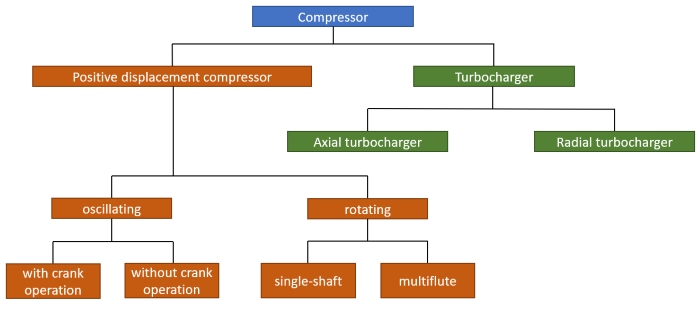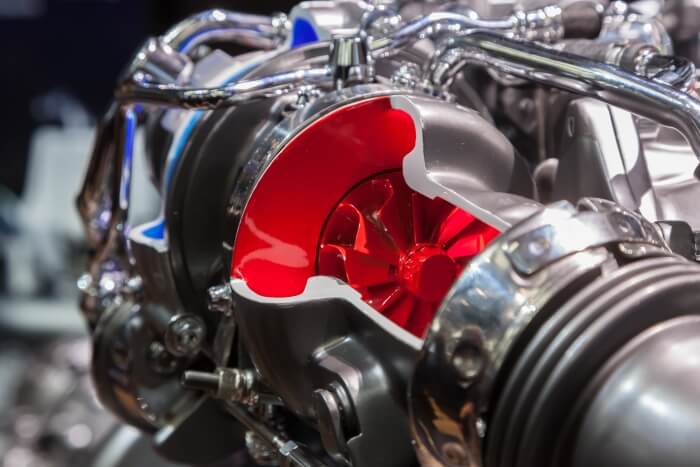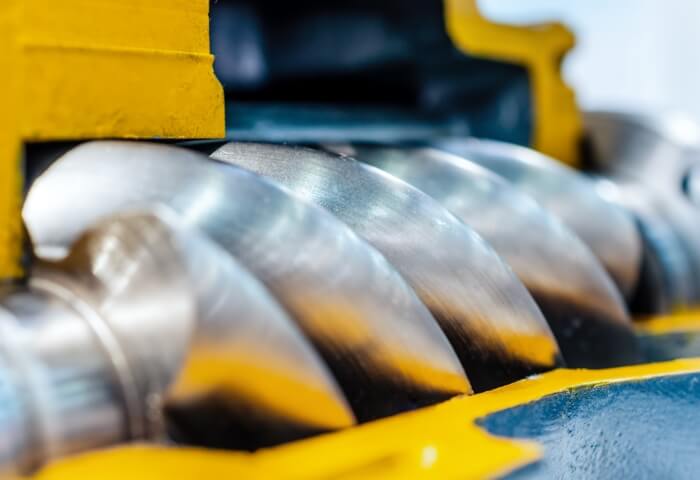


Compressor oils from ADDINOL for the highest demands
The ideal combination of high-quality base oils and highly effective additives guarantees outstanding performance of ADDINOL compressor oils. Oils of the VDL and VDL S series ensure excellent corrosion and aging protection even under the most difficult conditions. The use in screw, rotation and piston compressors places special demands on the temperature stability of the lubricants used. In addition, a low deposit and carbonization inclination plays an important role in component cleanliness and efficient operation. Thanks to minimal evaporation losses, ADDINOL compressor oils achieve optimum oil change intervals.
We have already summarised some important compressor oils for you.
Properties of ADDINOL compressor oils:
- excellent oxidation stability
- good demulsifying and air separation capacity
- very good protection against rust and corrosion even at standstill
- highest ageing resistance for long operating times and extension of oil change intervals
- optimum wear protection
- very low coking tendency
- high thermal load capacity
Information about compressor oils
Basics about compressors
Compressors densify gaseous substances (pumped media) and build up a gas pressure. These substances include media such as air, natural gas or oxygen. Experts distinguish between piston machines (displacement compressors) and flow machines (turbochargers). The design and mode of operation of the compressor types are very different. The type of compressor required for a working process depends on the operating conditions.
In a turbocharger a pumped medium flows through rotating, bladed impellers. This medium penetrates the impellers and exits under increased pressure and speed. The flow energy is converted into pressure energy.
Displacement compressors suck in gases and compress them in a closed space by means of a moving component (e.g. piston). The gas is then discharged in compressed form.

Pneurop is the association of European manufacturers of compressors, vacuum pumps and pneumatic tools. Although there are no official designations for all compressor types, Pneurop's classification is recognised in the industry.
Lubrication of compressors
There are air compressors with oil-lubricated pressure chambers and those with oil-free pressure chambers (dry-running compressors). Air compressors with oil-lubricated pressure chambers include reciprocating compressors, multi-cell compressors and screw compressors with oil-injection cooling. The friction partners are separated from each other partly with smaller oil quantities as with the reciprocating piston compressor, but also with large oil quantities as with the screw compressor with oil injection cooling. These are also referred to as oil-flooded compressors. In these systems, the oil also serves to cool the compressed air. In oil-lubricated compressors, the compressed air comes into direct contact with the oil and absorbs fine oil particles. To prevent too much oil from remaining in the compressed air, the particles are separated from the air by condensate or oil separation. This is important to reduce the risk of fire, as the oil-air mixture can act as a fire accelerator.
Air compressors with oil-free pressure spaces include root compressors, dry-running screw compressors and all turbochargers. In these systems, there are no friction partners that constantly collide. This makes lubrication of the parts superfluous. However, this does not mean that air compressors with oil-free pressure chambers do not require lubrication at all. In dry-running screw compressors, for example, radial and axial bearings must be lubricated by means of circulation lubrication.
Properties of compressor oils
Compressor oils consist of mineral oils or synthetic oils. Depending on the application, the properties of the base oil are decisive for the longest possible service life in the compressor. Compressors with high loads (pressures) and operating temperatures require synthetic oil, as this has a better viscosity index and is much more stable to ageing than mineral oil. Compressor oils based on mineral oil are mainly used for low to moderate loads in compressors.
The viscosity of compressor oils also depends on the operating conditions. Low-viscosity oils (e.g. ISO VG 32 & 46) are mostly used in compressors, as they spread quickly in the system even during cold starts and lubricate it sufficiently. The residue formation in the oil is also reduced by a low viscosity. The required viscosity of the compressor oil increases with the final compression temperature. If compressors are used in a wide temperature range (outdoors), the oils require good viscosity-temperature behaviour. The manufacturer's instructions specify the viscosity of the compressor oil.
Which requirements a compressor oil must fulfil also depends on the pumped medium used. Depending on the type of gas to be compressed, the oil must have specific properties. For example, methane dissolves in mineral oil, which impairs the quality of the oil. But methane does not dissolve in synthetic oils like PAG. So, you should use these types of synthetic oils instead.
Advantages of synthetic oil compared to mineral oil:
- High temperature resistance (cold and heat)
- High oxidation stability
- Flame retardancy
- Low evaporation tendency
- Low varnish formation (deposit formation)
- Longer oil change intervals
- Lower maintenance costs
Disadvantages of synthetic oil compared to mineral oil are considered:
- Incompatibility with various materials (sealing materials)
- Higher acquisition costs
Tasks of compressor oils
Compressor oils fulfil different tasks depending on the application. In general, compressor oils must form a stable lubricating film between the friction partners at high pressure and sometimes high temperatures and at the same time ensure that the heat is dissipated.
- Reciprocating compressor: lubrication of cylinder and engine
- Screw compressors: lubrication of sliding and rolling bearings, gears and sealing of the compressor, heat dissipation and noise reduction
- Turbochargers: lubrication of roller or plain bearings, gearboxes and shaft seals

Selection of compressor oils
As already indicated, the selection procedure of a compressor oil refers to several key points.
- Type and design of a compressor (single and multi-stage)
- Application (stationary or mobile)
- The type of gas to be compressed
- Degree of compression
- Final compression temperature
- Environmental influences (ambient temperature, dust, humidity)
Depending on the application, a different compressor oil should be used. Always observe the manufacturer's instructions for the compressor in question. Our application technology experts will be pleased to advise you.

Classification of compressor oils
An important property of compressor oils is their temperature resistance. High final compression temperatures are achieved during compressed air generation. The higher the temperature, the greater the thermal and oxidative load on the lubricants. The temperature resistance shrinks and ignitable residues are formed. DIN 51506 describes the minimum requirements for compressor oils, among other things, to minimise the risks of fire. The compressor oils of the VD-L group contained in the DIN standard meet the highest demands on the safety of the plant. The lubricants must be highly resistant to ageing, have a low tendency to form residues and be thermally resistant. In piston compressors, for example, they must be capable of withstanding final compression temperatures of 220 °C.
Hazard potential of air compressors
The oxidation products of the lubricants can form coke-like residues on valves, pipes and separators. As the temperature rises at the end of the compression process, the risk of coke-like residue formation increases in compressors with oil-lubricated pressure chambers. These residues can lead to a drop in efficiency, malfunctions, wear and increased fire hazard. However, there are some measures to reduce the risk potential in air compressors:
- Use of suitable lubricating oils of group VD-L with oxidation inhibitors, corrosion inhibitors and good water separation (reduction of coke formation)
- Maintaining the correct level of the lubricating oil (prevents deficient lubrication and sludge formation)
- Compliance with the permissible final compression temperature through effective cooling systems
- Drain condensate from pipes, coolers or separators to reduce residue formation
- Regular monitoring and cleaning of the compressor including the valves, cooler and filter
- Control of temperature and pressure to ensure smooth operation of the system
Oil check and oil change of compressor oil
It depends on the oil quality and the manufacturer's instructions when a compressor has to be overhauled and, if necessary, an oil change has to be carried out. However, the information in the operating instructions can only be regarded as rough guiding values, as each compressor operates differently due to different ambient conditions. Periodically send oil samples to the laboratory to monitor the condition of the compressor oil. Also check the oil level regularly to prevent malfunctions. The change intervals can be extended by oil care. This starts with regular cleaning of the oil filters to bind suspended particles in the oil and continues with periodic cleaning of the entire lubrication system. The oil must always be changed immediately after the compressor has been switched off. In the cooled compressor, impurities in the oil settle too quickly on the ground and are less easily drained.

Are you interested in our compressor oils? Find a sales partner near you.